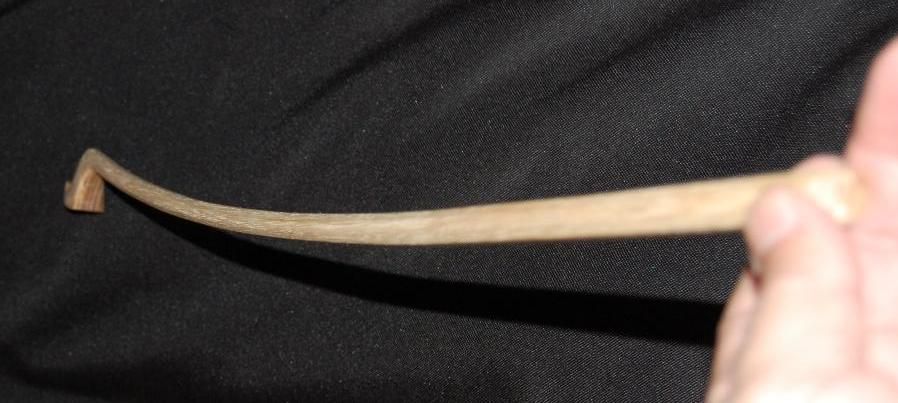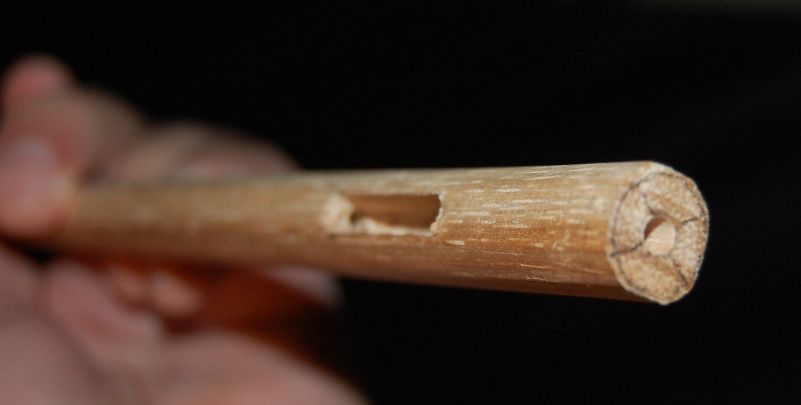Bow-making! An Archetier is a Bow-maker!
Of course, some people just call them “bowmakers”. (This is, of course, not to be confused with a bowyer: Those guys make bows for archers.) An archetier (yes, yes… bowmaker!) is someone who makes bows for instrument players– violins, violas, cellos, basses, and so forth.
Violinmakers are seldom bowmakers, and vice versa. The two are not necessarily mutually exclusive, it is just that they are definitely two complimentary but very different skills. Few people actively pursue both.
However, Paul Schuback, who is an extraordinarily fine violinmaker, was also trained in bowmaking during his apprenticeship in France. There he met a young woman, Lynn Hannings, who was training as a bowmaker. She followed on in that discipline and became a well-known professional bowmaker, and Paul went on to be a famous violinmaker (luthier).
Both have been my teachers, though briefly, and I have long desired to try to learn bowmaking as well as violin-making. I had taken Lynn’s class once, in California, just to learn to correctly re-hair a bow; but as I watched her other students building bows from scratch, I found myself wanting more and more to try my hand at that discipline.
So…you guessed it! I am trying to build a bow. I decided to try a bass-bow, simply because I think they are likely a little more forgiving in terms of exactitude (not much, but a little), and because they are bigger, thicker, and probably easier for me to handle. (I could be wrong….)
For anyone with similar interest, here is a link to a priceless list of resources.
Wood selection:
By far, the most ideal wood for violin-bows is Pernambuco, from the Amazon rain-forest in Brazil. But…that wood is now an endangered species, and illegal to cut or ship, so it will be harder and harder to acquire. There are tons of it already cut and dry, but it is difficult to get. Other woods include Brazilwood, Snakewood (also called “Amourette”), Ipé, and Bloodwood.
I am told that they are experimenting with farming Pernambuco in Brazil, planting the Pernambuco seedlings interspersed with the rubber trees on rubber plantations; but we won’t know for some time how that will work out. So, in the meanwhile: I can experiment with domestic woods, such as Osage Orange and Hickory and learn the hand/eye skills, then try some lesser tropical hardwoods, such as Ipé and Bloodwood. If I like it, and the bows turn out well (probably requiring a second (and third, etc.) “bout” with Lynn Hannings), then I may buy some pernambuco blanks and try some “real” bows. But Pernambuco is selling for around $200 per stick, now, so this is not for the faint of heart!
I ordered some Osage Orange, which is commonly used for archery bows (and sometimes double-bass bows), and while waiting for it to arrive, decided to experiment with hickory (also sometimes used, though not usually considered optimal). This time, however, I happened to have a select piece of straight, clear, vertical-grain hickory, about 20+ years old (OK, OK… it was a broken-off splitting-maul handle…but still: it was everything I just described), so it seemed a good way to get started.
Building Process:
I began by “cutting away everything that didn’t look like a bass-bow”, and tapering it as I thought it should be. I heated it with a heat-gun, and cambered it (bent it to the correct arch). Then I drilled the screw-way and carved the eyelet mortise.



The Frog:
Then I began a frog: I bought some African Blackwood remnants from a local hardwood dealer, and carved one into a bass-bow frog–still very rough-looking, but I am not done with it yet. I kept looking at a good frog someone gave me, to see what needed to be done next. There is still quite a long way to go, but I am waiting on some parts I ordered.



I ordered some gold MOP (mother of pearl) from a local supplier, and hair, screw and eyelet from a more distant supplier. (Here is a photo of how it looks so far:

(The hair and screw and eyelet were all ordered from the same distant supply place, and have not yet arrived.) I chose stainless steel for the ferrule and underslide, because it was readily available. (I went to a resale shop and bought some pieces of cheap stainless steel flatware in the thicknesses I needed…total outlay: $3, for enough metal to build several bows.)
How did it turn out? Not done yet. Tune in later for a progress report!

 Follow
Follow

interesting stuff…more please.
Will do, Padma! Good to hear from you!
SUper interesting! How did the osage and hickory bows turn out? How do they compare to each other? How do they compare to a pernambuco bow?
Well, quite honestly, I got sidetracked and never completed those bows! I am finishing up my second double bass (5-string, this time) right now, however (https://fivestringfiddles.com/blog-posts/) and it has occurred to me that I need to complete that bass bow along with the bass! I still have all the parts, but they were set aside in favor of building fiddles. Thanks for the reminder, and watch this space!